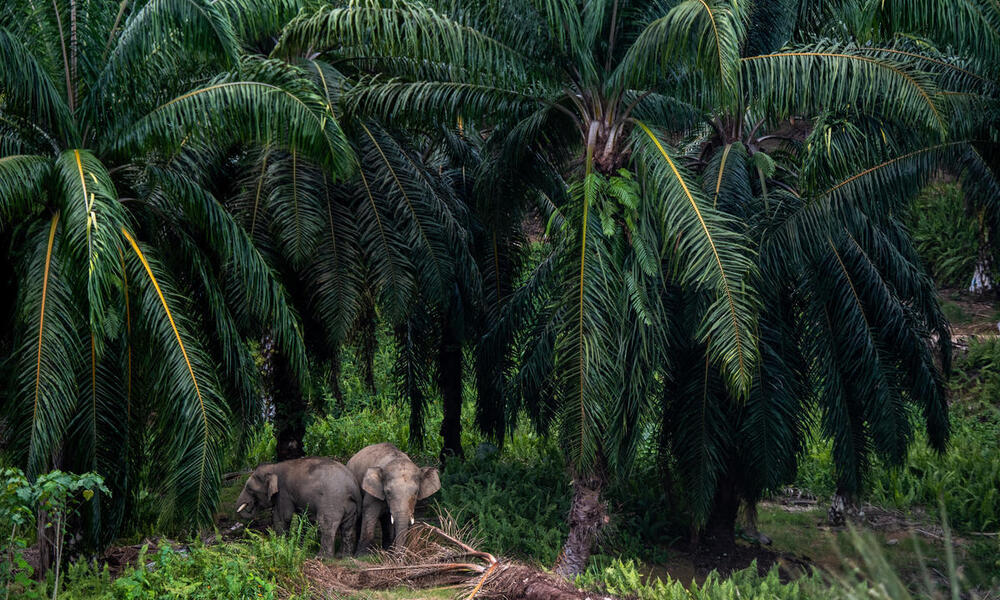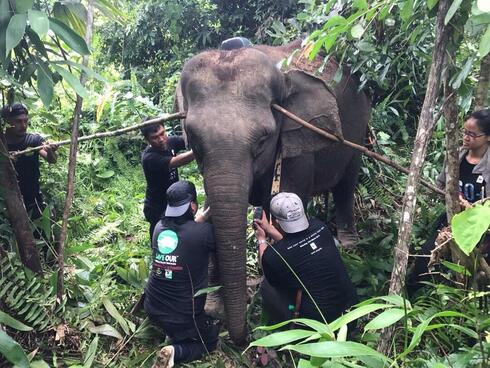The elephant collaring program was first established in October of 2013. Since then, Cheah and her team have helped put trackers on more than 25 elephants. Each collar costs roughly $4,000 USD, and the team receives funding to partially cover the expenses from WWF-Netherlands. “The collars give us three to four readings every day, which will allow us to study the elephants’ movements and better understand their range requirements,” explains Cheah.
Knowing where elephants like to roam in the region—if they prefer highlands to lowlands; if herds trek through untouched forests; or if they are migrating through plantations or other areas inhabited by humans—is important information to help protect them, she says.
To complement the data collected from the collars, the team ground truths this information through additional field research. “We follow the target elephants day and night by foot,” says Viccutter Denius, a senior program assistant who works with Cheah. To track the animals, Denius and his partner, Elbatius Sikul, sometimes spend a week or more walking through and sleeping in the forest. They take notes on the elephants’ movements, count herd size, and make other observations useful to the team’s conservation efforts. The work is physically demanding and at times can be dangerous, but Denius says he loves what he does. “Elephants are very social creatures,” he says. “I love learning about their behavior.”
The WWF Elephant Conservation Unit uses the elephant movement data to work with policymakers and plantation owners to find suitable places to establish protective barriers and wildlife corridors. Building blockades to deter herds from land occupied by humans and creating alternative safe pathways for them to move from one area to another helps protect the elephants and the people who live and work near them, creating a future in which humans and nature can live in harmony.


